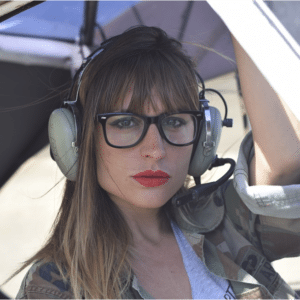Innovations In Private Aircraft And Flying Trends
A New Transit Environment
As modern transportation options become more cost-effective and tangible, many businesses and organizations are turning to private aircraft as a means of transit. It becomes especially cost-effective when an organization sends individuals on forty or more flights a year.
While there are certainly flying options that can be obtained—and in round trip designations, no less—at $100 or less per ticket, you’re more likely to pay in the neighborhood of $500 for a flight to and from a given destination. That ticket doesn’t include prospective lodging and food expenses likely billed to the larger organization.
It’s not unreasonable to assume about $600 per flight. After about forty flights, the cost ends up being somewhere around $24,000 in a year. Meanwhile, the average cost of running a many small private aircraft for an hour is right around $200—including maintenance, oil, storage, etcetera.
What this means is the magic number for cost-effectiveness in resource consolidation recommending a private aircraft is 40+ flights annually. If you’re a college with athletes going to distant meets regularly, footing the bill for those commercial flights can get expensive quick.
This is one reason universities are more regularly chartering private aircraft. From flying coaches to flying athletes, having a private aircraft for the college is more cost-effective than many other options end up being. The same is true for many small businesses that have an expanded clientele across a large area.
Many Areas Of Flight Possibility
Insurance claims adjusters are going to be flying very regularly. Certain kinds of sales people practically live in airports. Entertainment is a profession that demands regular travel—the list goes on. With these things in mind, it’s easy to see why there’s a bit of an industry in the innovation of private aircraft components.
While private aircraft don’t have cabins on the same scale as corporate solutions, the tide of upgrades now available is spilling over. Just check out these cutting edge innovations in larger aircraft to get an idea of the possibilities.
You probably won’t find a private plane so extravagant as some of those in the link; but there are considerable options available today, and many collateral benefits associated with them. If you’re truly going to get the maximum benefit from having an aircraft “on the payroll”, as it were, you want to branch out a bit.
When there aren’t scheduled flights, have local flying lessons. Get involved with fairs for publicity. Conduct local tours. You may even want to allow your aircraft to be chartered by private clients during times when it isn’t being excessively flown.
For all these things you’re going to need maintenance and repair options that are cost-effective, all-inclusive, and readily available. Thankfully, as the aviation industry has expanded beyond the commercial, many parts suppliers have become savvy to needs and structured their provisions accordingly.
Sourcing Aircraft Components
AeroInStock.com is an airplane engines parts supplier with a variety of flight-related products including an: “…extensive stock of aircraft parts [which] include…Air Boss…APS ‘BlackSteel’ brake discs and pads, Superflite engine enamel, Stratoflex hose assemblies, CMI, Lycoming…maintenance supplies, tools, and much more.”
If you decide to branch out and incorporate such solutions, you’ll want to find such component providers; especially as it seems that personal aviation will continue to develop into the future. Just consider the breakthroughs in drone technology.
It’s likely that airborne infrastructural design will be a regular component of small and large businesses in the very near future. Having an established mechanical solution readily available may be an essential saving grace.
We hope you found the above promoted content as entertaining and helpful as we did!










